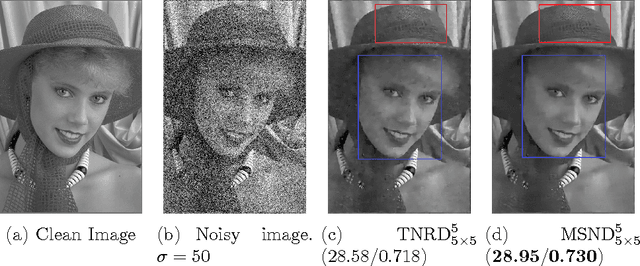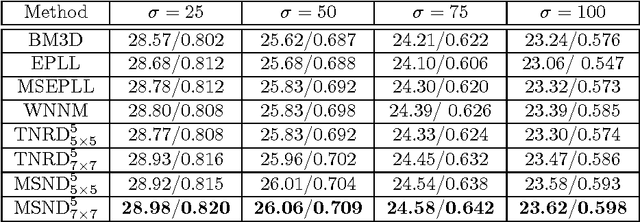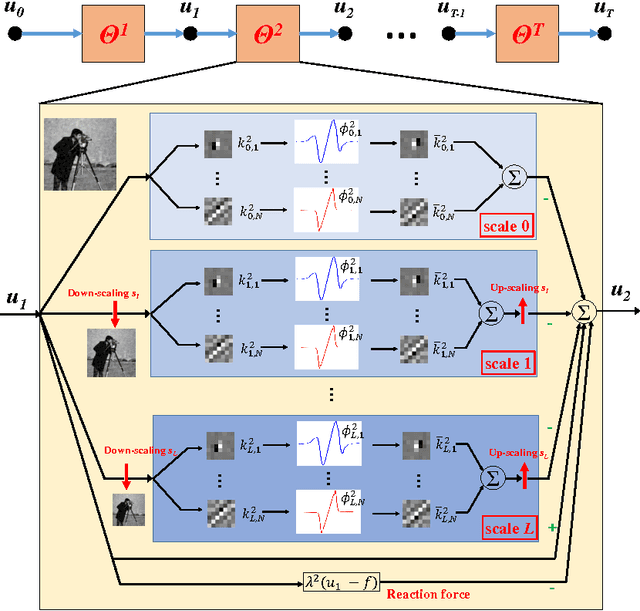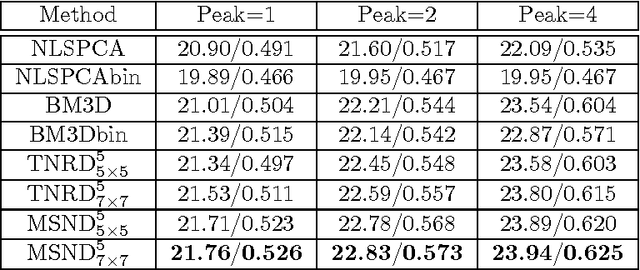Image Denoising via Multi-scale Nonlinear Diffusion Models
Paper and Code
Sep 21, 2016



Image denoising is a fundamental operation in image processing and holds considerable practical importance for various real-world applications. Arguably several thousands of papers are dedicated to image denoising. In the past decade, sate-of-the-art denoising algorithm have been clearly dominated by non-local patch-based methods, which explicitly exploit patch self-similarity within image. However, in recent two years, discriminatively trained local approaches have started to outperform previous non-local models and have been attracting increasing attentions due to the additional advantage of computational efficiency. Successful approaches include cascade of shrinkage fields (CSF) and trainable nonlinear reaction diffusion (TNRD). These two methods are built on filter response of linear filters of small size using feed forward architectures. Due to the locality inherent in local approaches, the CSF and TNRD model become less effective when noise level is high and consequently introduces some noise artifacts. In order to overcome this problem, in this paper we introduce a multi-scale strategy. To be specific, we build on our newly-developed TNRD model, adopting the multi-scale pyramid image representation to devise a multi-scale nonlinear diffusion process. As expected, all the parameters in the proposed multi-scale diffusion model, including the filters and the influence functions across scales, are learned from training data through a loss based approach. Numerical results on Gaussian and Poisson denoising substantiate that the exploited multi-scale strategy can successfully boost the performance of the original TNRD model with single scale. As a consequence, the resulting multi-scale diffusion models can significantly suppress the typical incorrect features for those noisy images with heavy noise.
 Add to Chrome
Add to Chrome Add to Firefox
Add to Firefox Add to Edge
Add to Edge